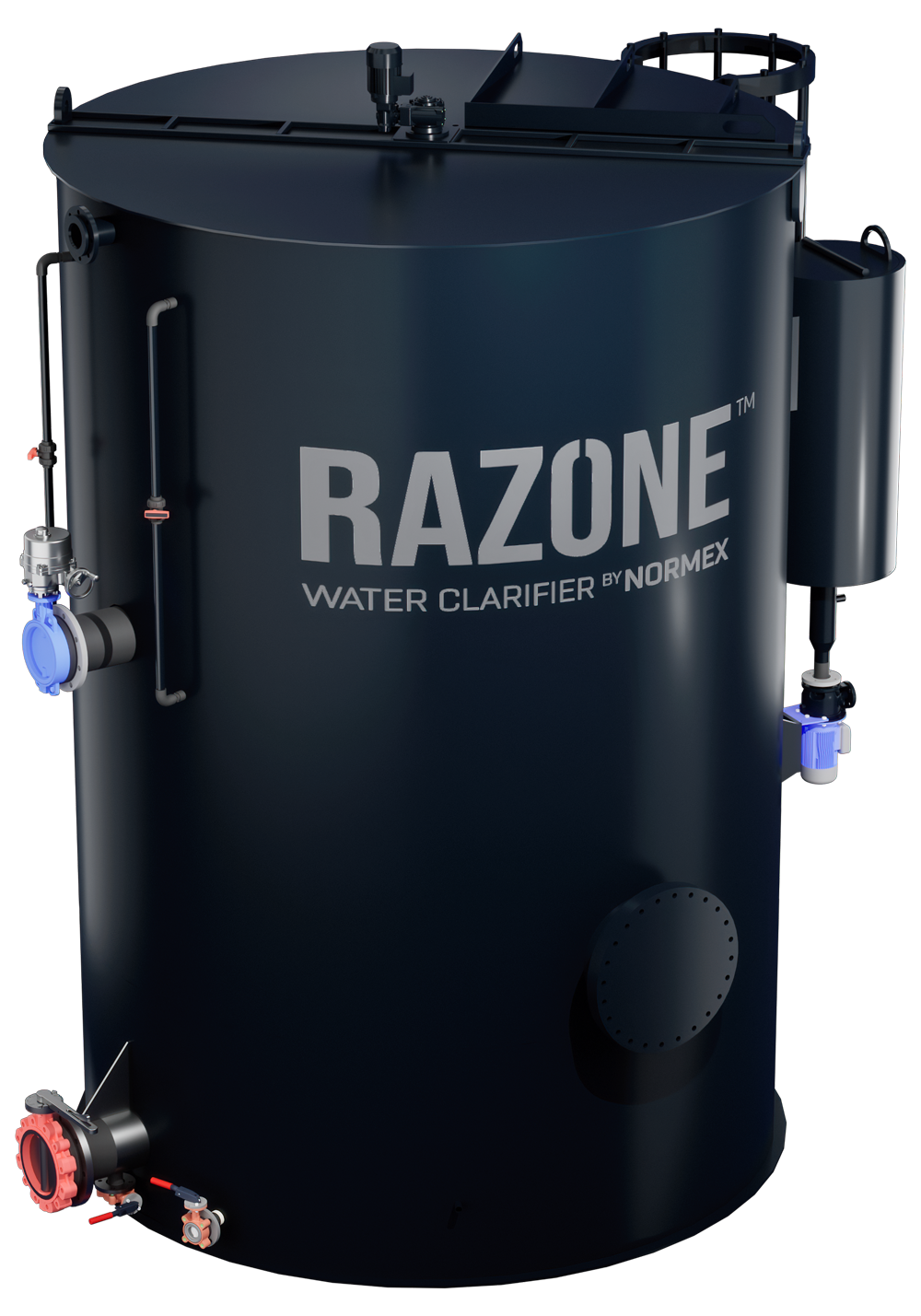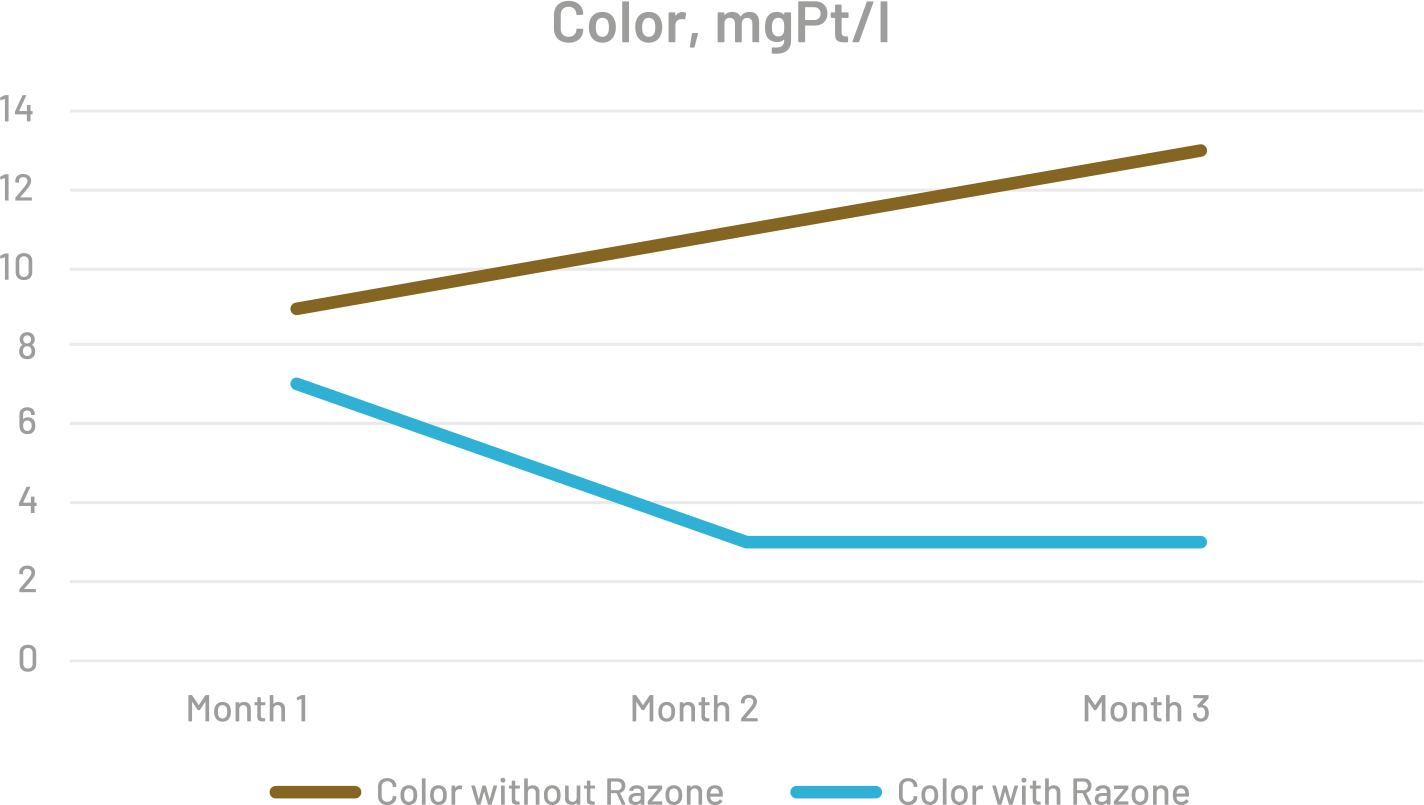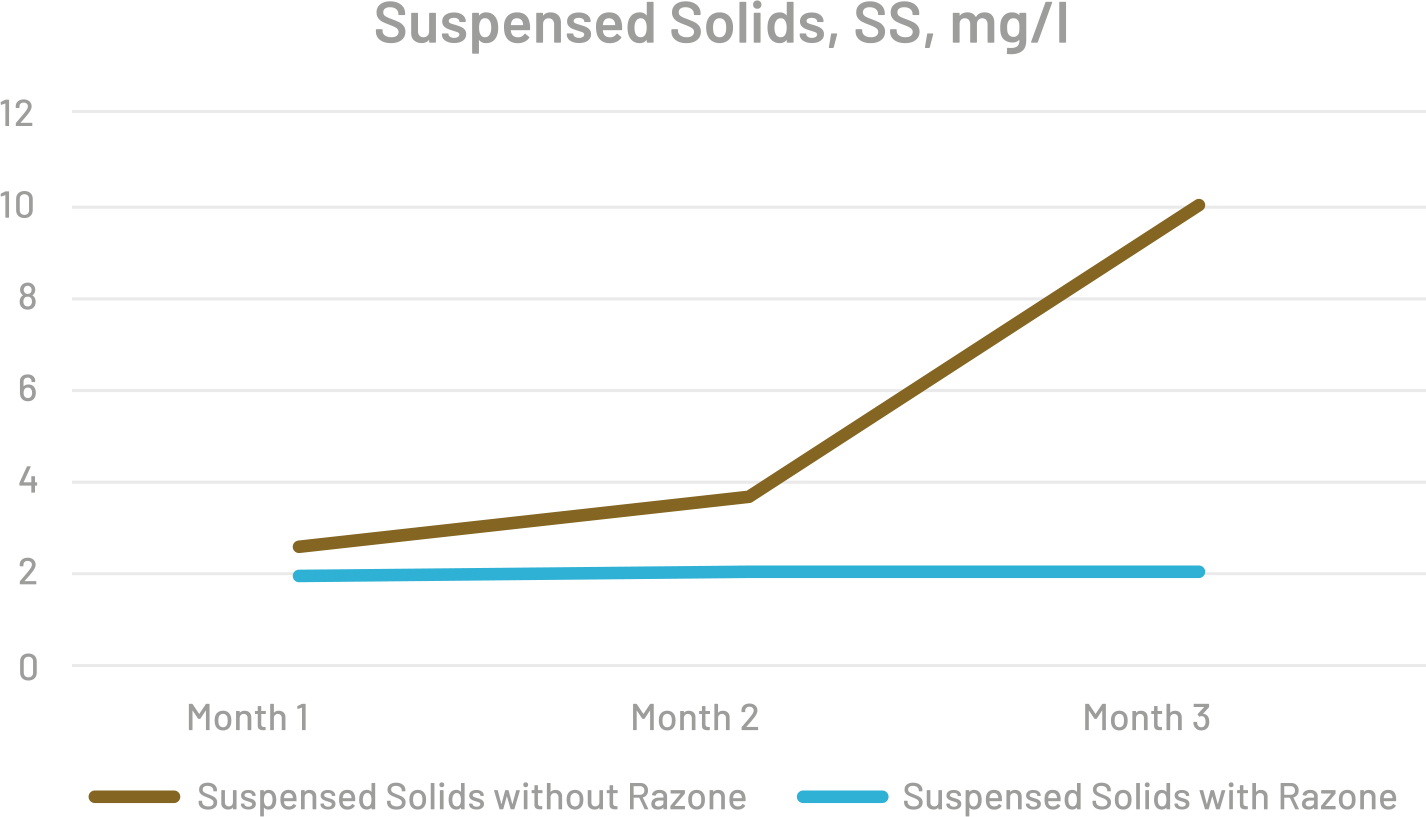Razone is a unique solution for cleaning and clearing water in fish farms on land. The system is sustainable, and improves water quality and fish welfare.
Levels of organic matter in a recirculation aquaculture system (RAS) are often high. That in turn creates a substantial threat of infections and blooms of harmful microorganisms, microparticles, micropollution and hydrogen sulphide.
Razone overcomes these problems by effectively eliminating microorganisms, microparticles and pollution in the water. Since the system is ozone-based, it operates without the use of hazardous chemicals.



Razone improves and maintains water quality, and contributes to better fish health, biosecurity and fish welfare.

Biosecurity in an RAS farm is increased by lowering the risk of micropollution, improving fish welfare and reducing mortality.

Costs are reduced in an RAS farm through better feed take-up and utilisation. It also improves the effectivity of the daily operations at the fish farm.

The profitability of an RAS farm increases because better growth conditions for the fish reduces production time.

Circulation water to be treated is conducted into a sidestream to Razone’s contact tank, where ozone is added.
The water is then pumped to the flotation tank, where small bubbles are injected. Flocculated particles shoot to the surface, allowing the sludge to be removed from the top and conducted to the sludge tank. Treated water emerges clean and clear from the bottom of the flotation tank, and is conducted back to the RAS farm.
Razone can be used either before or after the biofilter, and functions equally effectively in fresh water or seawater. Its control system automatically regulates the ozone concentration in the water in line with the quality of the latter. The system can also be connected to the farm’s general control system.
Razone improves water quality – promotes fish health and growth


We are pursuing a research and development project in collaboration with aquaculture specialist Mowi and Norway’s Nofima food research institute, with support from Innovation Norway.

The goal of the project is to determine whether Razone:
- “We’ve never had such clear and transparent water in the department before, and growth has never been better than during testing with Razone,”

- “Testing Razone has shown positive results. Accumulations have been avoided, and the particle count in the water is reduced"

Growth (g) after 60 days with Razone was about the level reached after 75 days without the system, which corresponds to a 20 per improvement over the period. (Dark blue line: Fish weight without Razone. Light blue line: Fish weight with Razone. Dotted line: Expected fish weight with Razone) This could also partly reflect temperature differences in the batches and a change in feed during the project.

Calculating the growth factor (VF3) takes account of the fact that temperature differences occurred in the batches and shows that the group with Razone had better real growth. Average water temperature was 10.2°C in the batch without Razone, and 12°C in the one with the system.

Tests with Razone have shown promising results. “Our main goal has been to investigate whether water quality improves,” says Stiller. Accumulations have been avoided, and the particle count in the water is reduced.
Samples show a lower content of natural organic material (colour), reduced particle concentration in the water (turbidity) and fewer solid particles – such as mud, fish sludge, feed residues and faeces (suspended solids).
See the figures below.

Reduced content of natural organic material (colour).

Reduced particle concentration in the water (turbidity).

Reduced quantity of solid particles in the water, such as mud, fish sludge, feed residues and faeces (suspended solids).
Razone can be used in hatcheries and land-based fish farms.